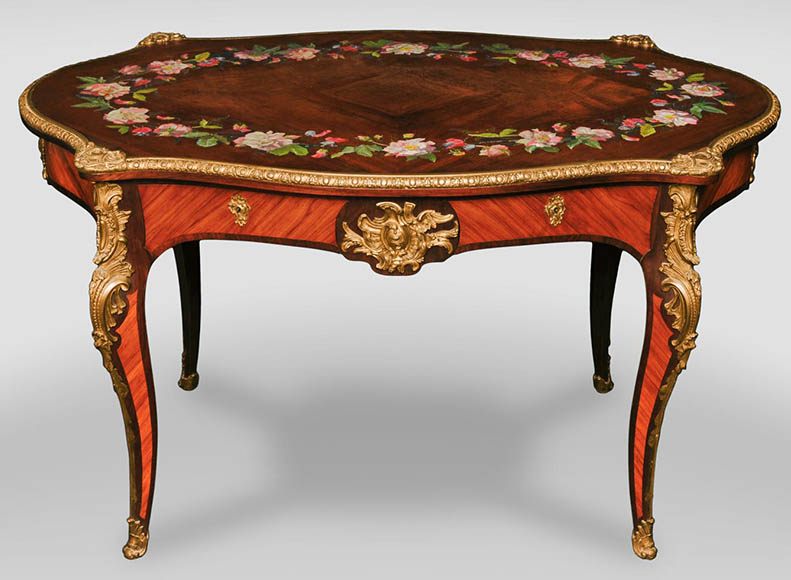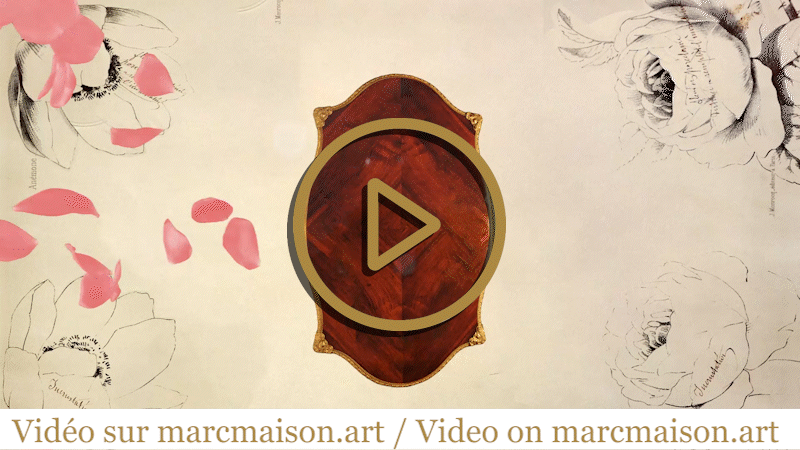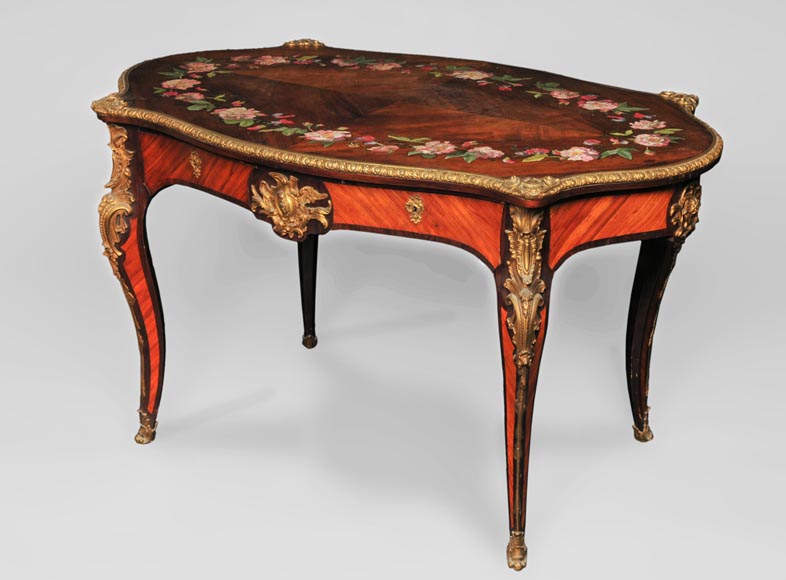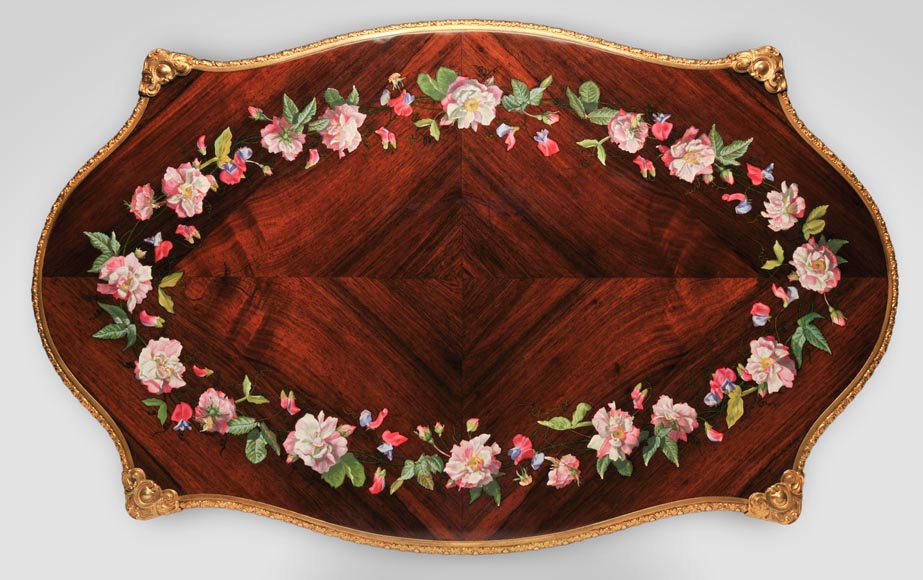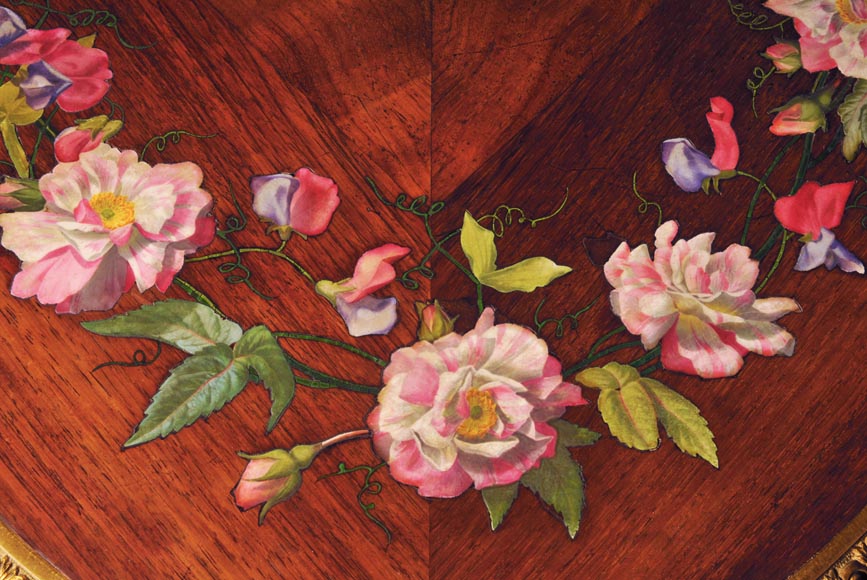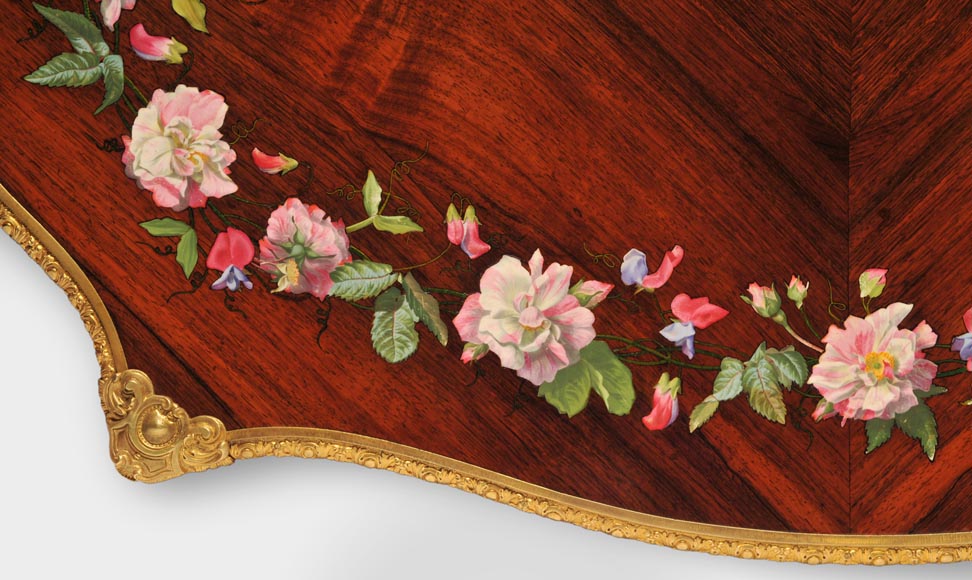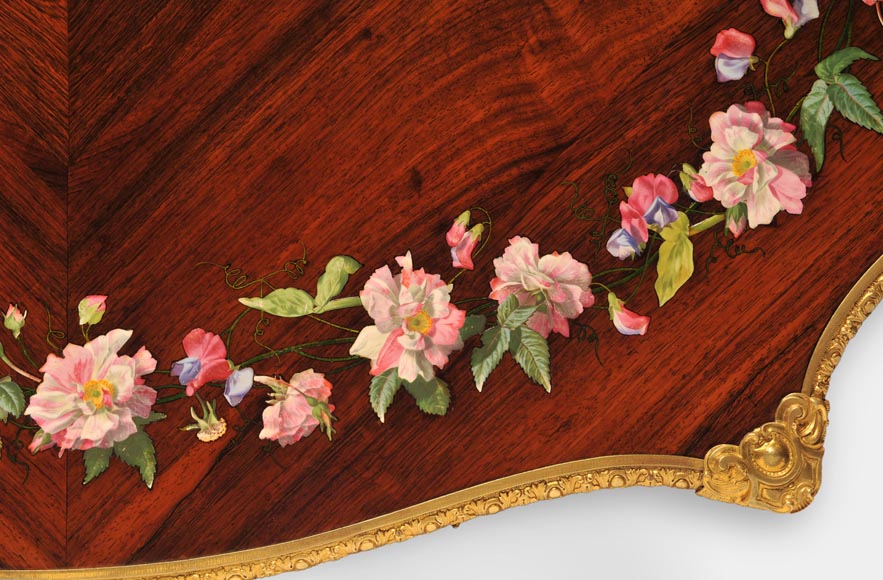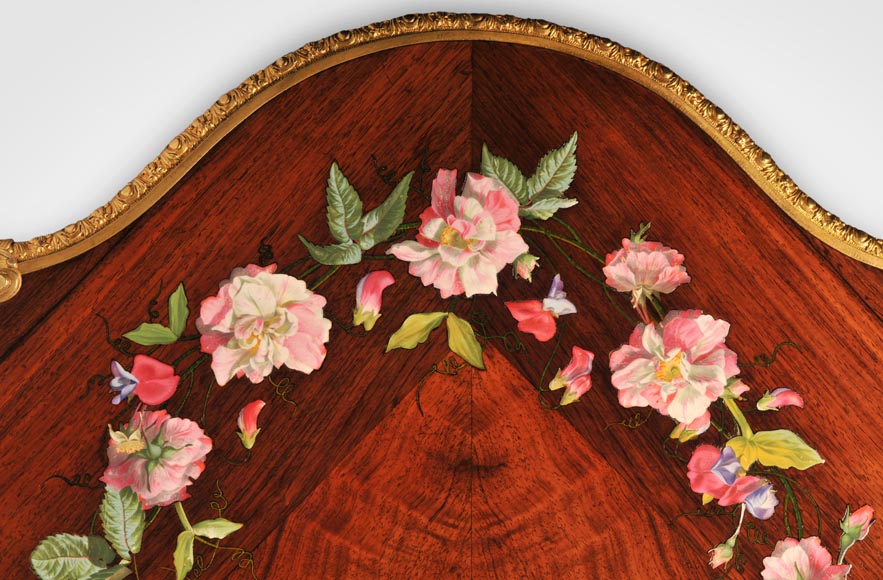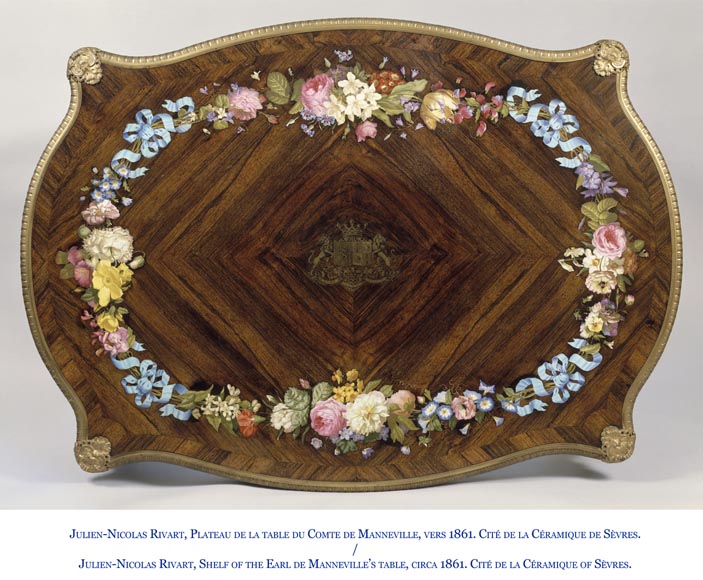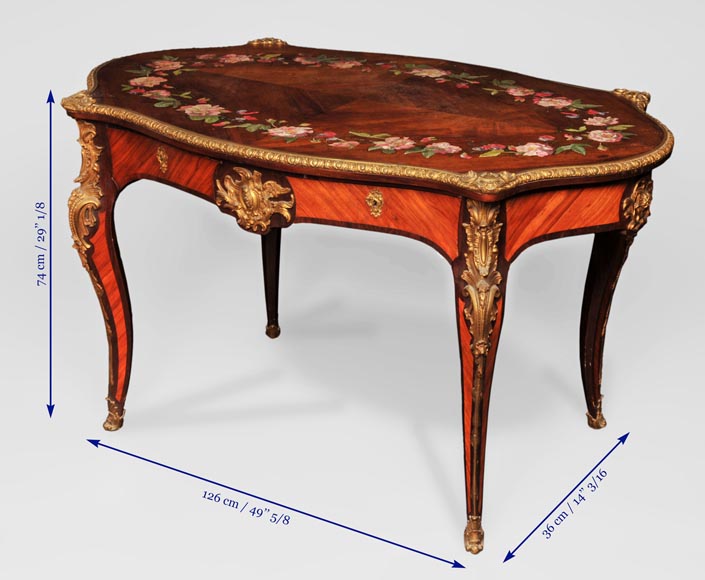Style Napoleon III / Ref.10718
Julien-Nicolas RIVART (1802-1867) - Louis XV style Rosewood Table with decor of porcelain marquetry
Dimensions
Width 49'' ⅝ 126cm
Height 29'' ⅛ 74cm
Depth: 14'' ⅛ 36cm
Origin:
Between 1850 and 1867.
Status:
Rosewood, gilt bronze, porcelain marquetry. In very good condition.
Marc Maison and Emmanuelle Arnauld, Masterpieces of Marquetry in the 19th Century. Patents. Rivart, Cremer, Fourdinois, Kayser Sohn and Duvinage, Dijon, Faton, 2012, p. 5 and 46.
Characteristic of Julien-Nicolas Rivart 's production, this Louis XV style table is adorned with inlays of porcelain flowers, a technique he patented in 1849. Inspired by both porcelain slabs inserted in wood panels, into fashion in the 18th century, as well as Florentine mosaics in hard stone, Julien-Nicolas Rivart succeeded to develop an original technique, totally renewing the use of porcelain by inlaying it like a true marquetry, where each element is independent.
The naturalism of peonies flush on the wood surface gives this piece of furniture a great elegance, demonstrating all the skill of the artist, who resorts to a virtuoso technique of ornamentation, of extremely delicate implementation. The finest foliage, made of dyed resin, ensures an elegant connection between the different pieces of porcelain.
Rivart 's favorite theme, the floral motifs can be seen on other tables, notably that purchased in 1861 by the Count of Manneville on the occasion of his wedding and preserved today at the Cité de la Ceramique of Sèvres. Like our table, it is decorated with a garland of flowers, shut by a bronze border running all the way along the shelf.
The painting of the inlaid flowers is not signed; we can however attribute it to Pierre-Joseph Guérou , painter of the Manufacture de porcelaine de Sèvres in 1847 and 1848 whose signature appears on several pieces of furniture by Rivart , like the Jewel case of the Empress Eugénie at the Château de Compiègne. A specialist in porcelain flower paintings, he also participated several times at the Salon between 1836 and 1866. The treatment of the petals in pink and white shades is characteristic of his style, which is easily recognizable.
Much appreciated by the critics for the charm of its porcelain marquetry, the Rivart technique was noticed at the World's Fairs he attended in 1851, 1855 and 1867. It is called a "delicious process", "still more beautiful than the beautiful", and is the subject of praiseworthy comments from the Emperor Napoleon III.
For more information on this work, see the video on MarcMaison.art.
Price: on request
Recommended for you :
Dimensions:
Width: 191
Height: 293
Depth: 56
Dimensions:
Width: 138
Height: 77
Depth: 85
Dimensions:
Width: 140
Height: 79
Depth: 136
Dimensions:
Width: 171
Height: 77
Depth: 94
Dimensions:
Width: 85
Height: 82
Depth: 57
Dimensions:
Width: 230
Height: 262
Depth: 66
Dimensions:
Width: 72
Height: 76
Depth: 105
Dimensions:
Width: 122
Height: 76
Depth: 82
Dimensions:
Width: 159
Height: 80
Depth: 98
Dimensions:
Width: 163
Height: 182
Depth: 66



